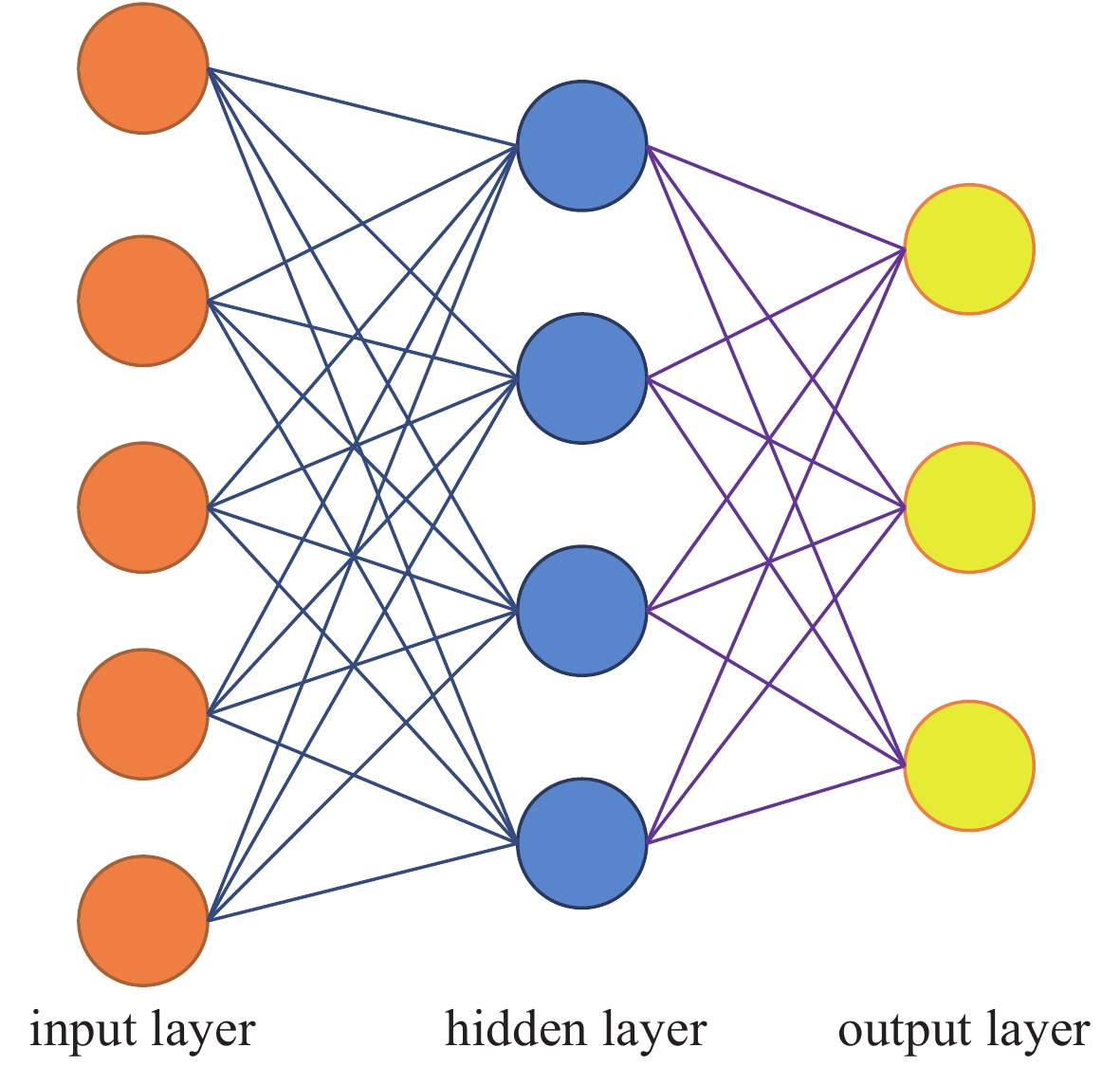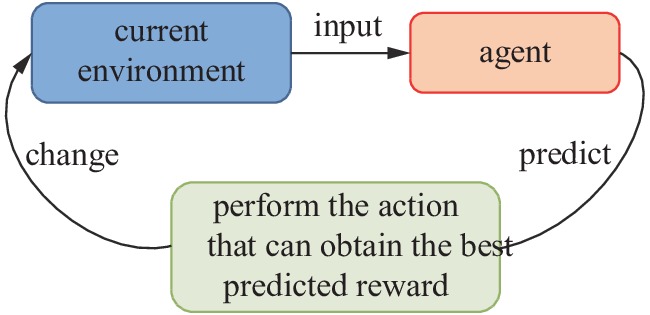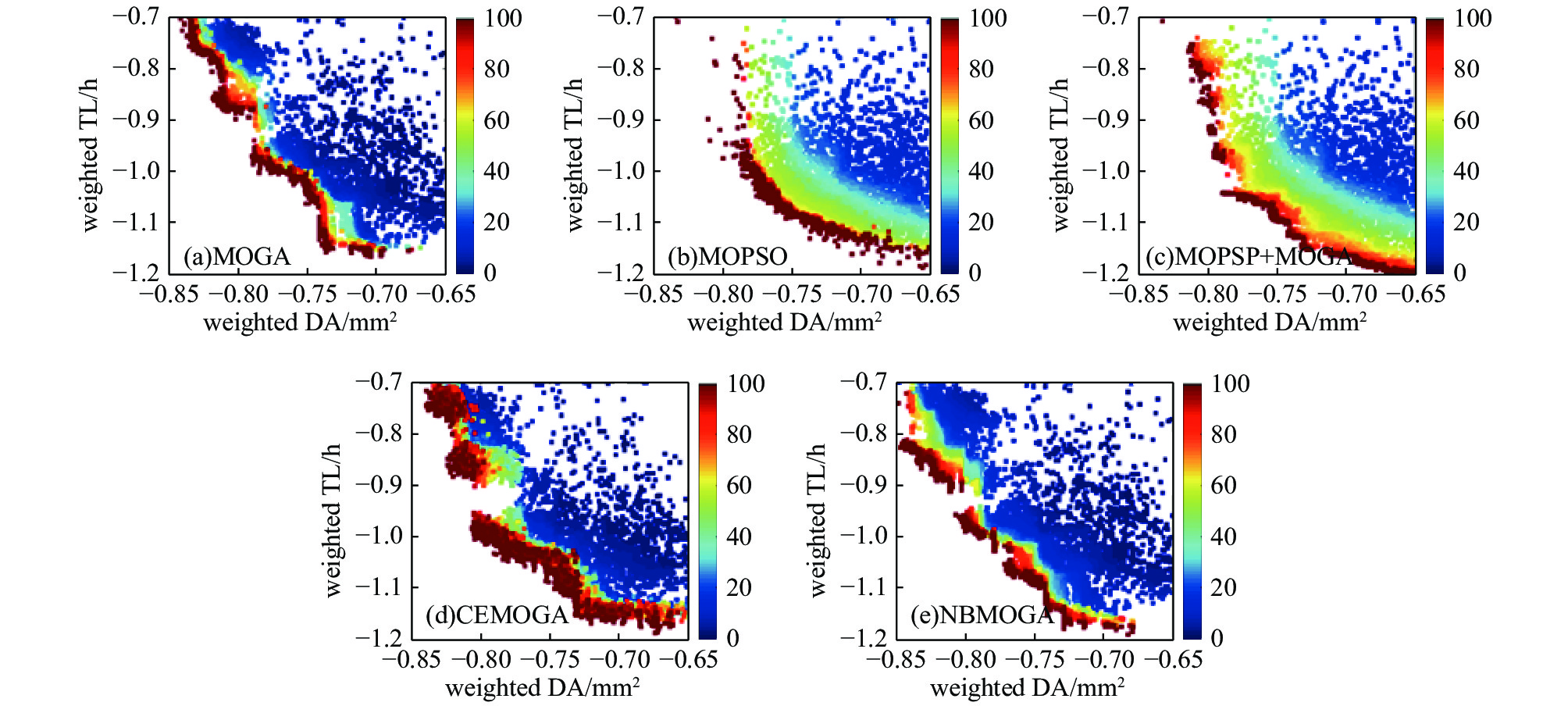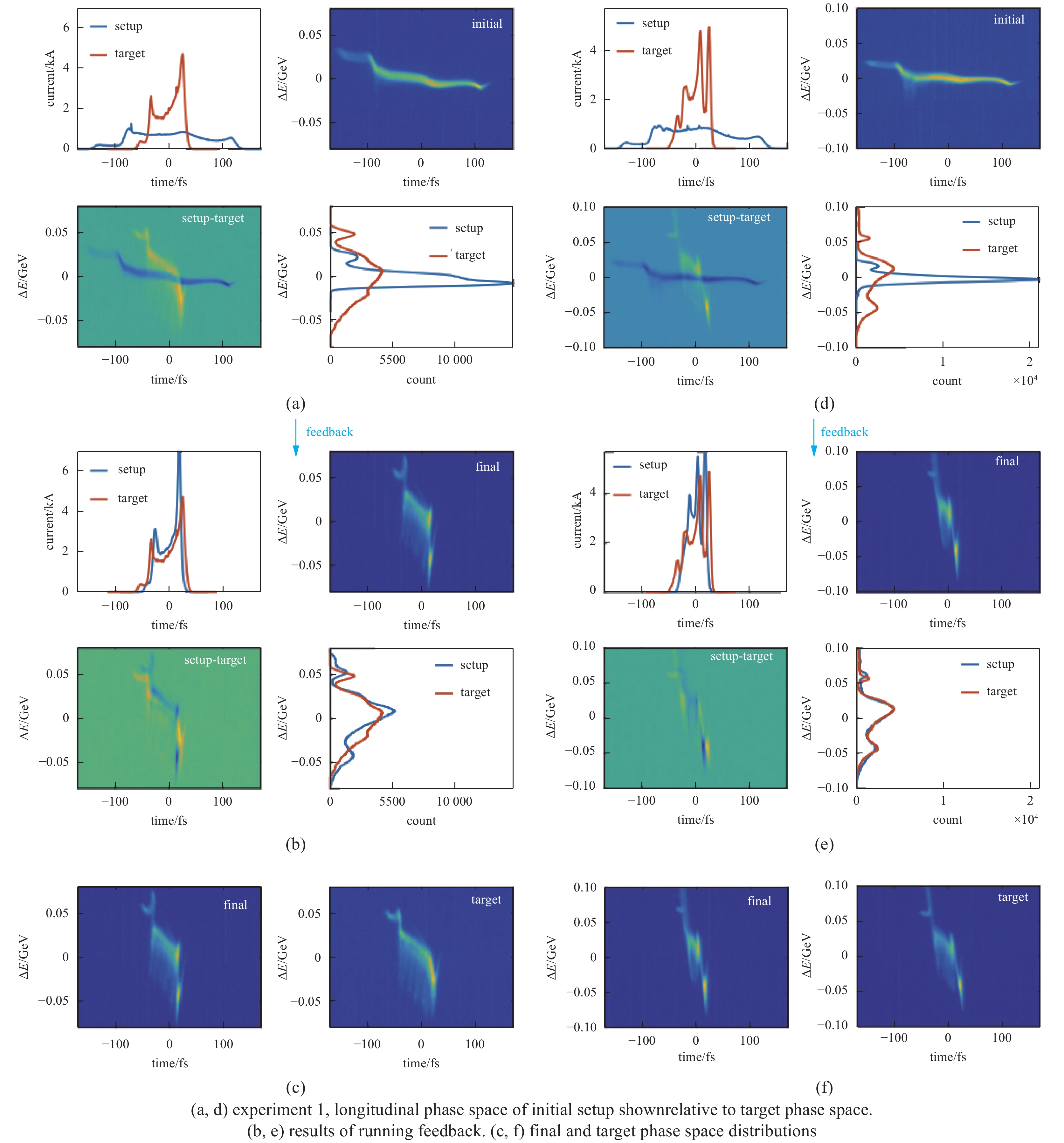Machine learning applications in large particle accelerator facilities: review and prospects
-
摘要:
机器学习技术在近十几年发展迅猛,并被广泛地用于解决复杂的科学和工程问题。最近十年间,基于机器学习的粒子加速器相关研究也开始呈现出井喷式发展趋势。国际上许多加速器实验室开始尝试用机器学习和大数据技术处理加速器中的海量复杂数据,以期解决加速器及其子系统中的诸多物理和技术问题。不过,迄今为止,机器学习在加速器中的应用仍处于初步探索阶段,不同机器学习算法在解决具体加速器问题的效果及其适用范围尚待摸索,机器学习在实际加速器中的应用仍非常有限。因此,有必要对加速器领域中的机器学习研究做一个整体回顾和总结。将回顾机器学习在大型粒子加速器(以储存环加速器和直线加速器为主)中的加速器技术、束流物理以及加速器整体性能优化等研究方向中已取得的研究成果,并探讨机器学习在加速器领域的未来发展方向和应用前景。
Abstract:Rapid growth of machine learning techniques has arisen over last decades, which results in wide applications of machine learning for solving various complex problems in science and engineering. In the last decade, machine learning and big data techniques have been widely applied to the domain of particle accelerators and a growing number of results have been reported. Several particle accelerator laboratories around the world have been starting to explore the potential of machine learning the processing the massive data of accelerators and to tried to solve complex practical problems in accelerators with the aids of machine learning. Nevertheless, current exploration of machine learning application in accelerators is still in a preliminary stage. The effectiveness and limitations of different machine learning algorithms in solving different accelerator problems have not been thoroughly investigated, which limits the further applications of machine learning in actual accelerators. Therefore, it is necessary to review and summarize the developments of machine learning so far in the accelerator field. This paper mainly reviews the successful applications of machine learning in large accelerator facilities, covering the research areas of accelerator technology, beam physics, and accelerator performance optimization, and discusses the future developments and possible applications of machine learning in the accelerator field.
-
-
[1] 张闯. 粒子加速器的回顾与展望[J]. 核科学与工程, 2001, 21(1):39-44. (Zhang Chuang. Review and prospects of particle accelerators[J]. Chinese Journal of Nuclear Science and Engineering, 2001, 21(1): 39-44 doi: 10.3321/j.issn:0258-0918.2001.01.006 [2] Durante M, Golubev A, Park W Y, et al. Applied nuclear physics at the new high-energy particle accelerator facilities[J]. Physics Reports, 2019, 800: 1-37. doi: 10.1016/j.physrep.2019.01.004 [3] Olive K A. Review of particle physics[J]. Chinese Physics C, 2014, 38: 090001. doi: 10.1088/1674-1137/38/9/090001 [4] Tobias C A. The future of heavy-ion science in biology and medicine[J]. Radiation Research, 1985, 103(1): 1-33. doi: 10.2307/3576668 [5] Rodríguez-Fernández L. Particle accelerator applications: ion and electron irradiation in materials science, biology and medicine[J]. AIP Conference Proceedings, 2010, 1271(1): 159-179. [6] Hamm R W, Hamm M E. Industrial accelerators and their applications[M]. Singapore: World Scientific Publishing Co. Pte. Ltd., 2012. [7] Pohlit W. Optimization of cancer treatment with accelerator produced radiations[C]//Proceedings of the 1st European Particle Accelerator Conference. 1988. [8] Antolak A J. Overview of accelerator applications for security and defense[J]. Reviews of Accelerator Science and Technology, 2015, 8: 27-36. doi: 10.1142/S1793626815300029 [9] Huang Nanshun, Deng Haixiao, Liu Bo, et al. Features and futures of X-ray free-electron lasers[J]. The Innovation, 2021, 2: 100097. [10] 赵瑀, 李志平, 刘伟航, 等. 衍射极限储存环光源相关物理问题[J]. 科学通报, 2020, 65(24):2587-2600. (Zhao Yu, Li Zhiping, Liu Weihang, et al. Physics issues of the diffraction-limited storage ring light source[J]. Chinese Science Bulletin, 2020, 65(24): 2587-2600 doi: 10.1360/TB-2020-0165 [11] Silver D, Huang A, Maddison C J, et al. Mastering the game of go with deep neural networks and tree search[J]. Nature, 2016, 529(7587): 484-489. doi: 10.1038/nature16961 [12] Zdeborová L. Machine learning: new tool in the box[J]. Nature Physics, 2017, 13(5): 420-421. doi: 10.1038/nphys4053 [13] Butler K T, Davies D W, Cartwright H, et al. Machine learning for molecular and materials science[J]. Nature, 2018, 559(7715): 547-555. doi: 10.1038/s41586-018-0337-2 [14] Tarca A L, Carey V J, Chen Xuewen, et al. Machine learning and its applications to biology[J]. PLoS Computational Biology, 2007, 3: e116. doi: 10.1371/journal.pcbi.0030116 [15] Kononenko I. Machine learning for medical diagnosis: history, state of the art and perspective[J]. Artificial Intelligence in Medicine, 2001, 23(1): 89-109. doi: 10.1016/S0933-3657(01)00077-X [16] Kiran B R, Sobh I, Talpaert V, et al. Deep reinforcement learning for autonomous driving: a survey[J]. IEEE Transactions on Intelligent Transportation Systems, 2021. doi: 10.1109/TITS.2021.3054625 [17] Bishop C M. Pattern recognition and machine learning[M]. New York: Springer, 2006. [18] Rodríguez G G, Gonzalez-Cava J M, Pérez J A M. An intelligent decision support system for production planning based on machine learning[J]. Journal of Intelligent Manufacturing, 2020, 31(5): 1257-1273. doi: 10.1007/s10845-019-01510-y [19] Bahdanau D, Cho K, Bengio Y. Neural machine translation by jointly learning to align and translate[DB/OL]. arXiv preprint arXiv: 1409.0473, 2016. [20] Peterson C. Track finding with neural networks[J]. Nuclear Instruments and Methods in Physics Research Section A: Accelerators, Spectrometers, Detectors and Associated Equipment, 1989, 279(3): 537-545. [21] JACoW. IPAC2019. Proceedings of the 10th international particle accelerator conference[EB/OL]. https://ipac2019.vrws.de/. [22] JACoW. PCaPAC2018. Proceedings of the 12th international workshop on emerging technologies and scientific facilities controls[EB/OL]. http://accelconf.web.cern.ch/AccelConf/pcapac2018/. [23] JACoW. ICALEPCS2019. Proceedings of the 17th international conference on accelerator and large experimental physics control systems[EB/OL]. http://icalepcs2019.vrws.de/. [24] Edelen A, Mayes C, Bowring D, et al. Opportunities in machine learning for particle accelerators[DB/OL]. arXiv preprint arXiv: 1811.03172, 2018. [25] Scheinker A, Emma C, Edelen A L, et al. Advanced control methods for particle accelerators (ACM4PA) 2019 workshop report[DB/OL]. arXiv preprint arXiv: 2001.05461, 2020. [26] Arpaia P, Azzopardi G, Blanc F, et al. Machine learning for beam dynamics studies at the CERN Large Hadron Collider[J]. Nuclear Instruments and Methods in Physics Research Section A: Accelerators, Spectrometers, Detectors and Associated Equipment, 2021, 985: 164652. doi: 10.1016/j.nima.2020.164652 [27] Ottavio T D, Binello K, Brown K A, et al. Experience with machine learning in accelerator controls[C]//Proceedings of the 16th International Conference on Accelerator and Large Experimental Control Systems. 2017: 258-264. [28] Ratner D F, Huang X, Mayes C E, et al. Report on the first ICFA mini-workshop on machine learning for particle accelerators[C]//Proceedings of the 60th ICFA Advanced Beam Dynamics Workshop on Future Light Sources. Shanghai, China. 2018. [29] Biedron S G. Machine learning, data mining and big data handling for accelerators[C]//Proceedings of IPAC19. Melbourne, Australia. 2019. [30] Ayodele T O. Types of machine learning algorithms[M]//Zhang Yagang. New Advances in Machine Learning. London: InTechOpen, 2010: 19-48. [31] Bottou L. Stochastic gradient descent tricks[M]//Montavon G, Orr G B, Müller K R. Neural Networks: Tricks of the Trade. 2nd ed. Berlin: Springer, 2012: 421-436. [32] Hinton G, Srivastava N, Swersky K. Neural networks for machine learning lecture 6a overview of mini-batch gradient descent[R]. http://www.cs.toronto.edu/~hinton/coursera/lecture6/lec6.pdf. [33] Aalen O O. A linear regression model for the analysis of life times[J]. Statistics in Medicine, 1989, 8(8): 907-925. doi: 10.1002/sim.4780080803 [34] Ostertagová E. Modelling using polynomial regression[J]. Procedia Engineering, 2012, 48: 500-506. doi: 10.1016/j.proeng.2012.09.545 [35] Swain P H, Hauska H. The decision tree classifier: design and potential[J]. IEEE Transactions on Geoscience Electronics, 1977, 15(3): 142-147. doi: 10.1109/TGE.1977.6498972 [36] Belgiu M, Drăguţ L. Random forest in remote sensing: a review of applications and future directions[J]. ISPRS Journal of Photogrammetry and Remote Sensing, 2016, 114: 24-31. doi: 10.1016/j.isprsjprs.2016.01.011 [37] Noble W S. What is a support vector machine?[J]. Nature Biotechnology, 2006, 24(12): 1565-1567. doi: 10.1038/nbt1206-1565 [38] Rasmussen C E, Williams C K I. Gaussian processes for regression[M]//Touretzky D S, Mozer M C, Hasselmo M E, et al. Advances in Neural Information Processing Systems 8. Cambridge: MIT Press, 1996: 514-520. [39] Cybenko G. Approximation by superpositions of a sigmoidal function[J]. Mathematics of Control, Signals and Systems, 1989, 2(4): 303-314. doi: 10.1007/BF02551274 [40] Kalchbrenner N, Grefenstette E, Blunsom P. A convolutional neural network for modelling sentences[DB/OL]. arXiv preprint arXiv: 1404.2188, 2014. [41] Zaremba W, Sutskever I, Vinyals O. Recurrent neural network regularization[DB/OL]. arXiv preprint arXiv: 1409.2329, 2014. [42] Hochreiter S, Schmidhuber J. Long short-term memory[J]. Neural Computation, 1997, 9(8): 1735-1780. doi: 10.1162/neco.1997.9.8.1735 [43] Likas A, Vlassis N, Verbeek J J. The global k-means clustering algorithm[J]. Pattern Recognition, 2003, 36(2): 451-461. doi: 10.1016/S0031-3203(02)00060-2 [44] Park H S, Jun C H. A simple and fast algorithm for K-medoids clustering[J]. Expert Systems with Applications, 2009, 36(2): 3336-3341. doi: 10.1016/j.eswa.2008.01.039 [45] Khan K, Rehman S U, Aziz K, et al. DBSCAN: past, present and future[C]//The Fifth International Conference on the Applications of Digital Information and Web Technologies (ICADIWT 2014). Bangalore: IEEE, 2014: 232-238. [46] Wold S, Esbensen K, Geladi P. Principal component analysis[J]. Chemometrics and Intelligent Laboratory Systems, 1987, 2(1/3): 37-52. [47] Liou C Y, Cheng Weichen, Liou J W, et al. Autoencoder for words[J]. Neurocomputing, 2014, 139: 84-96. doi: 10.1016/j.neucom.2013.09.055 [48] Goodfellow I, Pouget-Abadie J, Mirza M, et al. Generative adversarial networks[J]. Communications of the ACM, 2020, 63(1): 139-144. [49] Darling D A, Siegert A J F. The first passage problem for a continuous Markov process[J]. The Annals of Mathematical Statistics, 1953, 24(4): 624-639. doi: 10.1214/aoms/1177728918 [50] Watkins C J C H, Dayan P. Q-learning[J]. Machine Learning, 1992, 8(3/4): 279-292. doi: 10.1023/A:1022676722315 [51] Hester T, Vecerik M, Pietquin O, et al. Deep Q-learning from demonstrations[C]//Proceedings of the 32nd AAAI Conference on Artificial Intelligence. 2018: 3223-3230. [52] Silver D, Lever G, Heess N, et al. Deterministic policy gradient algorithms[C]//Proceedings of the 31st International Conference on International Conference on Machine Learning - Volume 32.2014: I-387-I-395. [53] Lillicrap T P, Hunt J J, Pritzel A, et al. Continuous control with deep reinforcement learning[DB/OL]. arXiv preprint arXiv: 1509.02971, 2015. [54] Chao A W. Physics of collective instabilities in high energy accelerators[M]. New York: Wiley, 1993. [55] Wan Weishi, Cary J R. Method for enlarging the dynamic aperture of accelerator lattices[J]. Physical Review Accelerators and Beams, 2001, 4: 084001. doi: 10.1103/PhysRevSTAB.4.084001 [56] Bilderback D H, Elleaume P, Weckert E. Review of third and next generation synchrotron light sources[J]. Journal of Physics B: Atomic, Molecular and Optical Physics, 2005, 38(9): S773-S797. doi: 10.1088/0953-4075/38/9/022 [57] Yang Lingyun, Robin D, Sannibale F, et al. Global optimization of an accelerator lattice using multiobjective genetic algorithms[J]. Nuclear Instruments and Methods in Physics Research Section A: Accelerators, Spectrometers, Detectors and Associated Equipment, 2009, 609(1): 50-57. [58] Huang Xiaobiao, Safranek J. Nonlinear dynamics optimization with particle swarm and genetic algorithms for SPEAR3 emittance upgrade[J]. Nuclear Instruments and Methods in Physics Research Section A: Accelerators, Spectrometers, Detectors and Associated Equipment, 2014, 757: 48-53. [59] Van der Veken F, Azzopardi G, Blanc F, et al. Application of machine learning techniques at the CERN Large Hadron Collider[C]//Proceedings of the European Physical Society Conference on High Energy Physics (EPS-HEP2019). 2020. [60] Li Yongjun, Cheng Weixing, Yu Lihua, et al. Genetic algorithm enhanced by machine learning in dynamic aperture optimization[J]. Physical Review Accelerators and Beams, 2018, 21: 054601. doi: 10.1103/PhysRevAccelBeams.21.054601 [61] Wan Jinyu, Chu P, Jiao Yi, et al. Improvement of machine learning enhanced genetic algorithm for nonlinear beam dynamics optimization[J]. Nuclear Instruments and Methods in Physics Research Section A: Accelerators, Spectrometers, Detectors and Associated Equipment, 2019, 946: 162683. doi: 10.1016/j.nima.2019.162683 [62] Edelen A, Neveu N, Frey M, et al. Machine learning for orders of magnitude speedup in multiobjective optimization of particle accelerator systems[J]. Physical Review Accelerators and Beams, 2020, 23: 044601. doi: 10.1103/PhysRevAccelBeams.23.044601 [63] Wan Jinyu, Chu P, Jiao Yi. Neural network-based multiobjective optimization algorithm for nonlinear beam dynamics[J]. Physical Review Accelerators and Beams, 2020, 23: 081601. doi: 10.1103/PhysRevAccelBeams.23.081601 [64] Wang Faya, Song Minghao, Edelen A, et al. Machine learning for design optimization of storage ring nonlinear dynamics[DB/OL]. arXiv preprint arXiv: 1910.14220, 2019. [65] Scheinker A, Bohler D, Tomin S, et al. Model-independent tuning for maximizing free electron laser pulse energy[J]. Physical Review Accelerators and Beams, 2019, 22: 082802. doi: 10.1103/PhysRevAccelBeams.22.082802 [66] Ruggiero F. Single-beam collective effects in the LHC[J]. Particle Accelerators, 1995, 50: 83-104. [67] Nagaitsev S, Huang Z, Power J, et al. Accelerator and beam physics research goals and opportunities[DB/OL]. arXiv preprint arXiv: 2101.04107, 2021. [68] Tsai C Y, Douglas D, Li R, Tennant C. Linear microbunching analysis for recirculation machines[J]. Physical Review Accelerators and Beams, 2016, 19: 114401. doi: 10.1103/PhysRevAccelBeams.19.114401 [69] Tsai C Y, Derbenev Y S, Douglas D, et al. Vlasov analysis of microbunching instability for magnetized beams[J]. Physical Review Accelerators and Beams, 2017, 20: 054401. doi: 10.1103/PhysRevAccelBeams.20.054401 [70] Boltz T, Brosipresenter M, Bründermann E, et al. Studies of longitudinal dynamics in the micro-bunching instability using machine learning[C]//Proceedings of the 9th International Particle Accelerator Conference. Vancouver: JACoW Publishing, 2018: 3277-3279. [71] Ögren J, Gohil C, Schulte D. Surrogate modeling of the CLIC final-focus system using artificial neural networks[J]. Journal of Instrumentation, 2021, 16: P05012. doi: 10.1088/1748-0221/16/05/P05012 [72] Tsai C Y, Wu Juhao, Yang Chuan, et al. Sideband instability analysis based on a one-dimensional high-gain free electron laser model[J]. Physical Review Accelerators and Beams, 2017, 20: 120702. doi: 10.1103/PhysRevAccelBeams.20.120702 [73] Emma P, Akre R, Arthur J, et al. First lasing and operation of an ångstrom-wavelength free-electron laser[J]. Nature Photonics, 2010, 4(9): 641-647. doi: 10.1038/nphoton.2010.176 [74] Ivanov A, Agapov I. Physics-based deep neural networks for beam dynamics in charged particle accelerators[J]. Physical Review Accelerators and Beams, 2020, 23: 074601. doi: 10.1103/PhysRevAccelBeams.23.074601 [75] Price T J, Cortes H M C, Dunning D J, et al. Virtual VELA-CLARA: the development of a virtual accelerator[C]//Proceedings of the 9th International Particle Accelerator Conference. Vancouver: JACoW Publishing, 2018: 4773-4776. [76] Vay J L, Sagan D, Huebl A, et al. End-to-End Virtual Accelerators (EVA)[EB/OL]. https://www.snowmass21.org/docs/files/summaries/CompF/SNOWMASS21-CompF2_CompF0-AF1_AF0_Vay-067.pdf. [77] Ng J Q, Ryne R, Thévenet M, et al. Center(s) for Accelerator and Beam physics modeling[EB/OL]. https://www.snowmass21.org/docs/files/summaries/CompF/SNOWMASS21-CompF2_CompF0-AF1_AF0_Vay-069.pdf. [78] Edelen A L, Biedron S G, Chase B E, et al. Neural networks for modeling and control of particle accelerators[J]. IEEE Transactions on Nuclear Science, 2016, 63(2): 878-897. doi: 10.1109/TNS.2016.2543203 [79] Edelen A L, Biedron S G, Milton S V, et al. Initial experimental results of a machine learning-based temperature control system for an RF gun[DB/OL]. arXiv preprint arXiv: 1511.01883, 2015. [80] Edelen A L, Biedron S G, Milton S V, et al. Resonant frequency control for the PIP-II injector test RFQ: control framework and initial results[C]//Proceedings of the NAPAC2016.2016: 109-112. [81] Bowring D, Biedron S, Chase B, et al. Resonant control for Fermilab's PXIE RFQ[R]. Batavia: Fermi National Accelerator Lab. (FNAL), 2016. [82] Edelen A L, Biedron S G, Milton S V, et al. Neural network model of the PXIE RFQ cooling system and resonant frequency response[C]//Proceedings of the 7th International Particle Accelerator Conference. 2016: 4131-4133. [83] Edelen J P, Edelen A L, Bowring D, et al. First principles modeling of RFQ cooling system and resonant frequency responses for Fermilab’s PIP-II injector test[J]. IEEE Transactions on Nuclear Science, 2017, 64(2): 800-808. doi: 10.1109/TNS.2016.2644663 [84] Kong Y B, Hur M G, Lee E J, et al. Predictive ion source control using artificial neural network for RFT-30 cyclotron[J]. Nuclear Instruments and Methods in Physics Research Section A: Accelerators, Spectrometers, Detectors and Associated Equipment, 2016, 806: 55-60. [85] Cruz J A D, Biedron S, Martinez-Ramon M, et al. Studies in applying machine learning to LLRF and resonance control in superconducting RF cavities[DB/OL]. arXiv preprint arXiv: 1910.07648, 2019. [86] Schirmer D. Intelligent controls for the electron storage ring DELTA[C]//Proceedings of the 9th International Particle Accelerator Conference. 2018: 4855-4858. [87] Tennant C, Carpenter A, Powers T, et al. Superconducting radio-frequency cavity fault classification using machine learning at Jefferson Laboratory[J]. Physical Review Accelerators and Beams, 2020, 23: 114601. doi: 10.1103/PhysRevAccelBeams.23.114601 [88] Wielgosz M, Skoczeń A, Mertik M. Using LSTM recurrent neural networks for monitoring the LHC superconducting magnets[J]. Nuclear Instruments and Methods in Physics Research Section A: Accelerators, Spectrometers, Detectors and Associated Equipment, 2017, 867: 40-50. [89] Wielgosz M, Mertik M, Skoczeń A, et al. The model of an anomaly detector for HiLumi LHC magnets based on recurrent neural networks and adaptive quantization[J]. Engineering Applications of Artificial Intelligence, 2018, 74: 166-185. doi: 10.1016/j.engappai.2018.06.012 [90] Wielgosz M, Skoczen A, Wiatr K. Looking for a correct solution of anomaly detection in the LHC machine protection system[C]//2018 International Conference on Signals and Electronic Systems (ICSES). Kraków: IEEE, 2018: 257-262. [91] Fol E, Tomás R, de Portugal J C, et al. Detection of faulty beam position monitors using unsupervised learning[J]. Physical Review Accelerators and Beams, 2020, 23: 102805. doi: 10.1103/PhysRevAccelBeams.23.102805 [92] Fol E, de Portugal J M C, Tomás R. Unsupervised machine learning for detection of faulty beam position monitors[C]//Proceedings of the 10th International Particle Accelerator Conference. Melbourne, Australia: JACoW Publishing, 2019: 2668-2671. [93] Kube G. Beam diagnostic requirements: an overview[R]. Tuusula: CAS - CERN Accelerator School: Beam Instrumentation, 2018. [94] Fol E, Carlier F, de Portugal J M C, et al. Machine learning methods for optics measurements and corrections at LHC[C]//Proceedings of the 9th International Particle Accelerator Conference. 2018: 1967-1970. [95] Jiang R T, Leng Y B, Chen F Z, et al. Identification of faulty beam position monitor based clustering by fast search and find of density peaks[C]//Proceedings of the 7th International Beam Instrumentation Conference (IBIC'18). Shanghai. 2018: 114-117. [96] Vilsmeier D, Sapinski M, Singh R, et al. Reconstructing space-charge distorted IPM profiles with machine learning algorithms[J]. Journal of Physics: Conference Series, 2018, 1067: 072003. doi: 10.1088/1742-6596/1067/7/072003 [97] Vilsmeier D, Sapinski M, Singh R. Space-charge distortion of transverse profiles measured by electron-based ionization profile monitors and correction methods[J]. Physical Review Accelerators and Beams, 2019, 22: 052801. doi: 10.1103/PhysRevAccelBeams.22.052801 [98] Sanchez-Gonzalez A, Micaelli P, Olivier C, et al. Accurate prediction of X-ray pulse properties from a free-electron laser using machine learning[J]. Nature Communications, 2017, 8: 15461. doi: 10.1038/ncomms15461 [99] Emma C, Edelen A, Hogan M J, et al. Machine learning-based longitudinal phase space prediction of particle accelerators[J]. Physical Review Accelerators and Beams, 2018, 21: 112802. doi: 10.1103/PhysRevAccelBeams.21.112802 [100] Ren X, Edelen A, Lutman A, et al. Temporal power reconstruction for an X-ray free-electron laser using convolutional neural networks[J]. Physical Review Accelerators and Beams, 2020, 23: 040701. doi: 10.1103/PhysRevAccelBeams.23.040701 [101] Xu Xingyi, Zhou Yimei, Leng Yongbin. Machine learning application in bunch longitudinal phase measurement[C]//Proceedings of the 10th International Particle Accelerator Conference. 2019: 2625-2628. [102] Xu Xingyi, Zhou Yimei, Leng Yongbin. Machine learning based image processing technology application in bunch longitudinal phase information extraction[J]. Physical Review Accelerators and Beams, 2020, 23: 032805. doi: 10.1103/PhysRevAccelBeams.23.032805 [103] Gao Bo, Chen Jie, Leng Yongbin, et al. Machine learning applied to predict transverse oscillation at SSRF[C]//Proceedings of the 7th International Beam Instrumentation Conference (IBIC 2018). Shanghai: JACoW Publishing, 2018: 512-515. [104] Scheinker A, Cropp F, Paiagua S, et al. Demonstration of adaptive machine learning-based distribution tracking on a compact accelerator: towards enabling model-based 6D non-invasive beam diagnostics[DB/OL]. arXiv preprint arXiv: 2102.10510, 2021. [105] Valentino G, Aßmann R, Bruce R, et al. Semiautomatic beam-based LHC collimator alignment[J]. Physical Review Accelerators and Beams, 2012, 15: 051002. doi: 10.1103/PhysRevSTAB.15.051002 [106] Azzopardi G, Valentino G, Salvachua B, et al. Software architecture for automatic LHC collimator alignment using machine learning[C]//Proceedings of the 17th ICALEPCS. 2019: 78-85. [107] Azzopardi G, Salvachua B, Valentino G, et al. Operational results on the fully automatic LHC collimator alignment[J]. Physical Review Accelerators and Beams, 2019, 22: 093001. doi: 10.1103/PhysRevAccelBeams.22.093001 [108] Huang Xiaobiao. Robust simplex algorithm for online optimization[J]. Physical Review Accelerators and Beams, 2018, 21: 104601. doi: 10.1103/PhysRevAccelBeams.21.104601 [109] Huang Xiaobiao, Corbett J, Safranek J, et al. An algorithm for online optimization of accelerators[J]. Nuclear Instruments and Methods in Physics Research Section A: Accelerators, Spectrometers, Detectors and Associated Equipment, 2013, 726: 77-83. [110] Nelder J A, Mead R. A simplex method for function minimization[J]. The Computer Journal, 1965, 7(4): 308-313. doi: 10.1093/comjnl/7.4.308 [111] Scheinker A, Pang Xiaoying, Rybarcyk L. Model-independent particle accelerator tuning[J]. Physical Review Accelerators and Beams, 2013, 16: 102803. doi: 10.1103/PhysRevSTAB.16.102803 [112] Chung Y, Decker G, Evans K. Closed orbit correction using singular value decomposition of the response matrix[C]//Proceedings of International Conference on Particle Accelerators. Washington: IEEE, 1993: 2263-2265. [113] Bozoki E, Friedman A. Neural networks and orbit control in accelerators[R]. Upton: Brookhaven National Lab., 1994. [114] Meier E, Tan Y R E, LeBlanc G S. Orbit correction studies using neural networks[C]//Proceedings of the 3rd International Particle Accelerator Conference. 2012: 2837-2839. [115] 李瑞淳, 张庆磊, 米清茹, 等. 机器学习在储存环轨道校正中的应用研究[J]. 强激光与粒子束, 2021, 33:034007. (Li Ruichun, Zhang Qinglei, Mi Qingru, et al. Application of machine learning in orbital correction of storage ring[J]. High Power Laser and Particle Beams, 2021, 33: 034007 [116] Meier E, Morgan M J, Biedron S G, et al. Electron beam stabilization test results using a neural network hybrid controller at the Australian Synchrotron and Linac Coherent Light Source[C]//Proceedings of FEL2009. Liverpool, 2009: 766-771. [117] Boldeman J W, Einfeld D. The physics design of the Australian synchrotron storage ring[J]. Nuclear Instruments and Methods in Physics Research Section A: Accelerators, Spectrometers, Detectors and Associated Equipment, 2004, 521(2/3): 306-317. [118] Leemann S C, Amstutz P, Ehrlichman M P, et al. First attempts at applying machine learning to ALS storage ring stabilization[C]//Proceedings of the 10th International Particle Accelerator Conference. Melbourne: JACoW Publishing, 2019: 1631-1634. [119] Leemann S C, Liu S, Hexemer A, et al. Demonstration of machine learning-based model-independent stabilization of source properties in synchrotron light sources[J]. Physical Review Letters, 2019, 123: 194801. doi: 10.1103/PhysRevLett.123.194801 [120] Boltz T, Brosi M, Bründermann E, et al. Feedback design for control of the micro-bunching instability based on reinforcement learning[C]//Proceedings of the ICFA mini-Workshop on Mitigation of Coherent Beam Instabilities in Particle Accelerators. 2020, 9: 227-229. [121] Ruth R D, Chao A W, Morton P L, et al. A plasma wake field accelerator[J]. Particle Accelerators, 1984, 17: 171-189. [122] Ratner D F, Chao A W. Steady-state microbunching in a storage ring for generating coherent radiation[J]. Physical Review Letters, 2010, 105: 154801. doi: 10.1103/PhysRevLett.105.154801 [123] Scheinker A, Edelen A, Bohler D, et al. Demonstration of model-independent control of the longitudinal phase space of electron beams in the linac-coherent light source with femtosecond resolution[J]. Physical Review Letters, 2018, 121: 044801. doi: 10.1103/PhysRevLett.121.044801 -




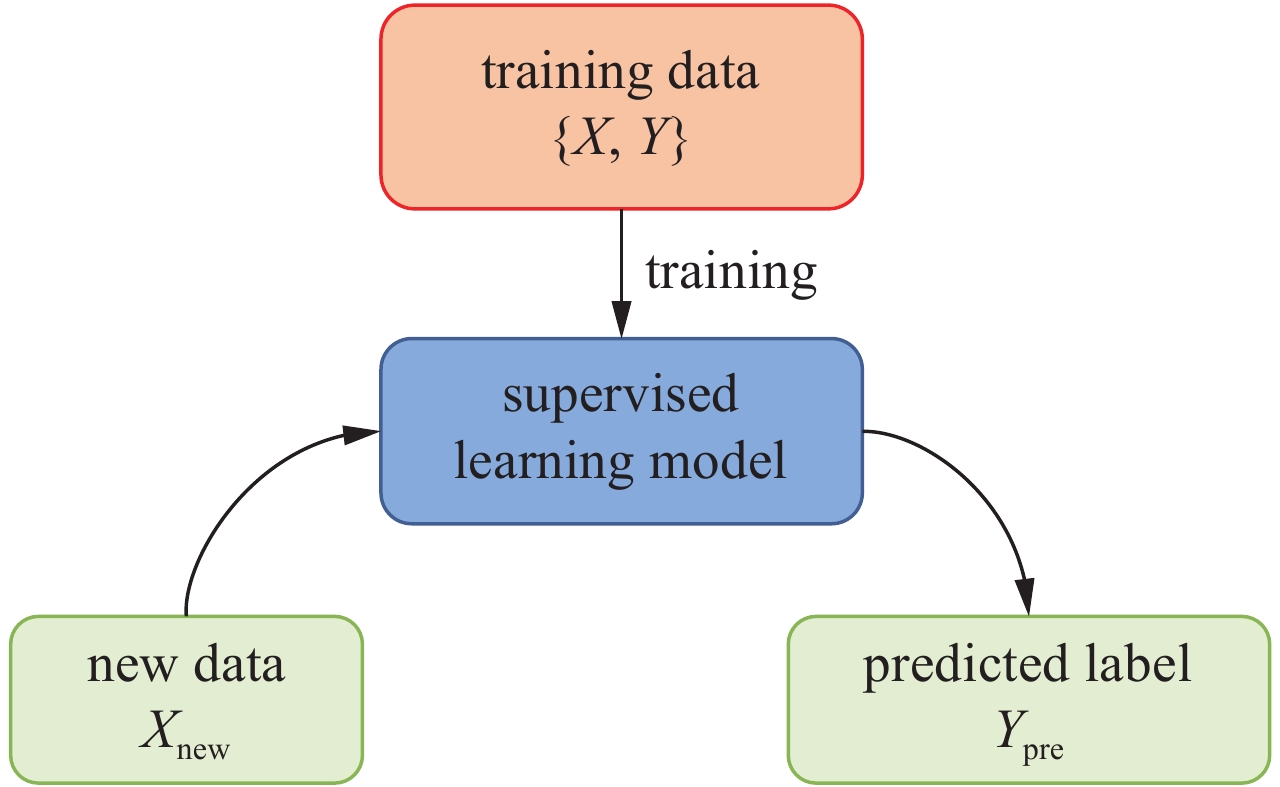
 下载:
下载:
